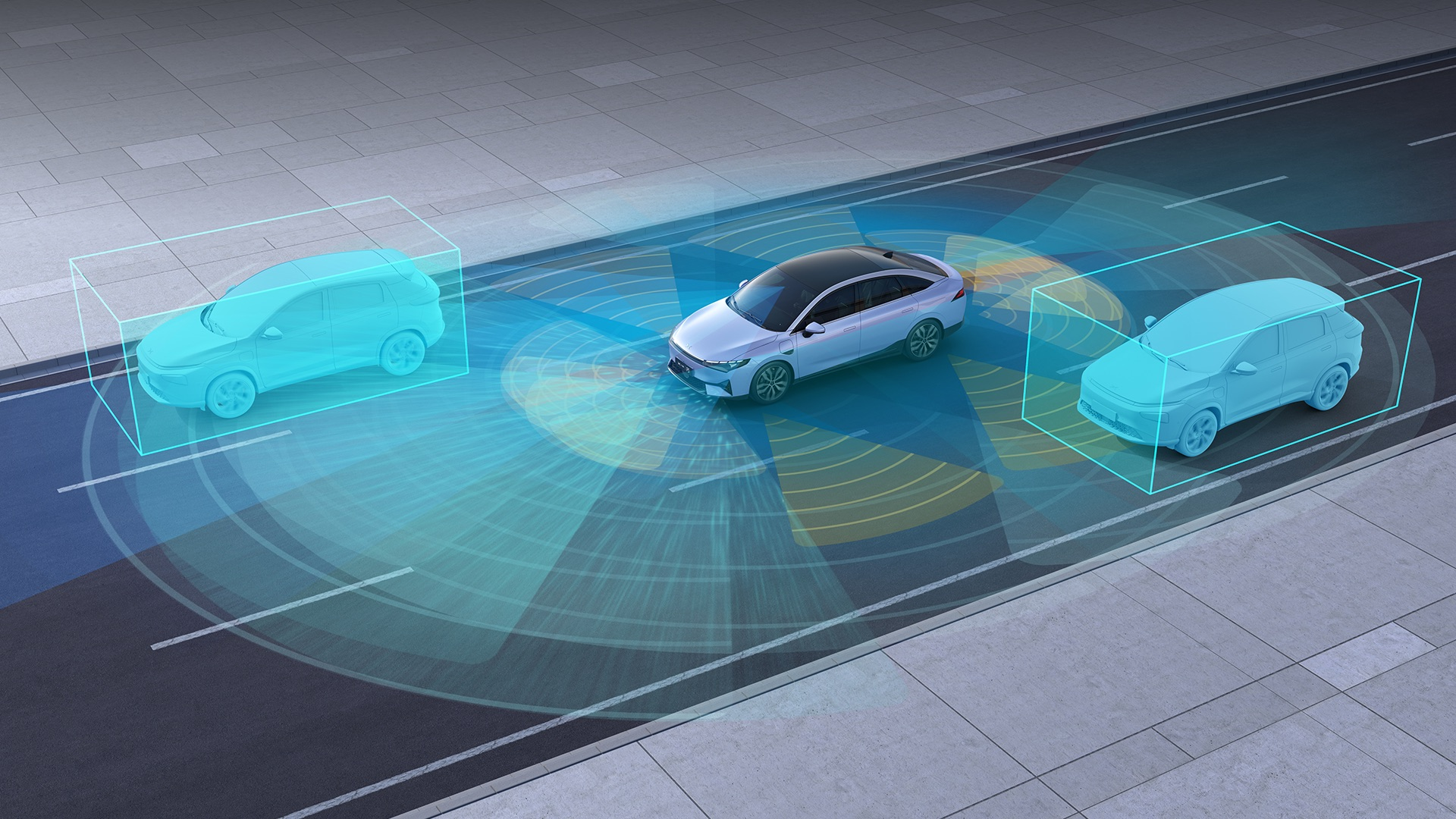At the XPeng P5 launch event last night, XPeng also released a video showcasing the NGP (Next-Generation Platform) capabilities on city roads. Let’s discuss a couple of highlights from the 3-minute video.
1. P5’s Urban Pilot Assist feature can handle roundabouts
This capability is one of the fundamental abilities needed to achieve NGP on city roads, similar to traffic light recognition, unprotected left and right turns. However, it has not received much attention. Roundabouts pose a challenge due to the complex lane markings particularly at entry and exit points. Even experienced drivers often find it hard to identify these markings.
From the video, we can see that the P5 navigated the roundabouts smoothly.
In addition to basic camera perception, P5 also leverages high-precision maps provided by Gaode (AutoNavi maps) as an auxiliary. Therefore, P5 is well aware of what the upcoming lane looks like and which lane to take, which is the advantage of high-precision maps.
2. P5’s near-range perception is greatly improved
We found in our previous 42Mark tests that the P7 is weak at handling near-range merges. However, this is a common issue in current L2 ADAS (Advanced Driver-Assistance Systems).
In the video, we can see that when there was a car merging in front of the P5, it detected it promptly and safely avoided it. Moreover, during some alternative routing, the P5 monitored vehicles behind it very accurately.
3. P5’s Urban NGP has implemented many efficiency enhancements
Simply put, this includes the logic for alternative routing. All current ADAS don’t include such active routing logic since it requires higher vehicle perception capabilities. After all, it involves entering other drivers’ traffic lanes which introduces a high risk of being fully responsible in case of an accident.
There are two types of alternative routing demonstrated in the video.The first type is a slight detour that requires the system to accurately judge the distance between the preceding vehicle and the lane markings, while also detecting whether it will affect adjacent lanes.
This feature is critical for urban navigation assistance, as urban roads often have a large number of pedestrians, bicycles crossing motor vehicle lanes, and numerous ride-hailing vehicles parking in the roadway.
If these cannot be navigated, even if the function is mass-produced, it may end up being unused and become a dead-end product.
In fact, we have already experienced this logic in the parking memory parking system that we pushed out with P7. During a daytime driving test, we even encountered a rear vehicle while avoiding obstacles.
The second type is a large-angle detour. In one of the scenarios, when passing through a roundabout, P5 identified and promptly moved to the right lane, which was more spacious, when encountering a cutting-in vehicle, significantly improving the traffic efficiency, which is highly rated.
Another scenario is encountering a bus that stops to load and unload passengers. Since the next intersection requires a right turn, P5 preemptively shifted to the right lane. However, after encountering the bus, the system made a quick decision to detour after waiting briefly, which is highly rated.
Of course, there are still some aspects in the video that are not well handled, such as when detouring around food delivery electric vehicles. When the following vehicle stopped directly, the system handled it with no major issues, but is not as smooth as a human driver.
Also when turning right later, the system yielded to non-motorized vehicles, but the overall response was a bit slow, only stopping after the electric vehicle had passed.
There are still some issues, but there is also time. XPeng is working on optimization, and the speed at which the city NGP is coming is faster than anticipated.
This article is a translation by ChatGPT of a Chinese report from 42HOW. If you have any questions about it, please email bd@42how.com.
